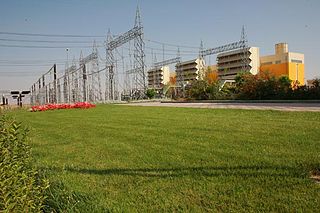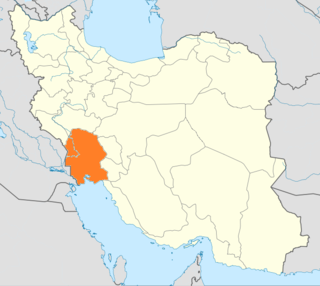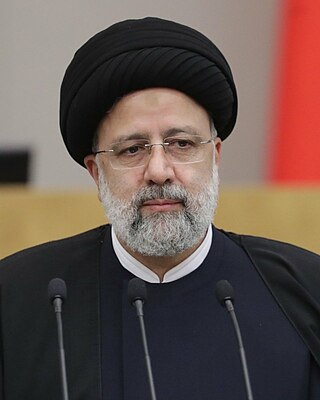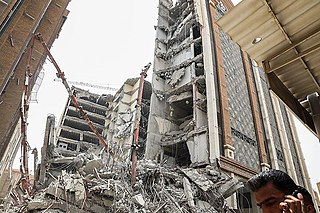
The economy of Iran includes a lot of subsidies. Food items, such as flour and cooking oil, are subsidized, along with fuels such as gasoline. However cutting subsidies can cause civil unrest.

The Jordanian protests were a series of protests in Jordan that began in January 2011, and resulted in the firing of the cabinet ministers of the government. In its early phase, protests in Jordan were initially against unemployment, inflation, corruption. along with demanding for real constitutional monarchy and electoral reforms.

The impact of the Arab Spring concerns protests or by the way attempts to organize growing protest movements that were inspired by or similar to the Arab Spring in the Arab-majority states of North Africa and the Middle East, according to commentators, organisers, and critics. These demonstrations and protest efforts have all been critical of the government in their respective countries, though they have ranged from calls for the incumbent government to make certain policy changes to attempts to bring down the current political system in its entirety. In some countries, protests have become large or widespread enough to effect change at the national level, as in Armenia, while in others, such as Djibouti, were swiftly suppressed.
The 2011 Khuzestan protests, known among protesters as the Ahvaz Day of Rage, relates to violent protests, which erupted on 15 April 2011 in Khuzestan Province, to mark an anniversary of the 2005 Ahvaz unrest, and as a response to the regional Arab Spring. The protests lasted for 4 days and resulted in 12 to 15 protesters killed and many wounded and arrested. 1 security officer was killed as well, and another wounded. Crackdown on Arab political opposition in the area continued since with arrests and executions.

Arab separatism in Khuzestan refers to the century-long separatist Arab movement in the western part of the Khuzestan Province in Iran.

Sayyid Ebrahim Raisolsadati, commonly known as Ebrahim Raisi, is an Iranian principlist politician, Muslim jurist, and the eighth and current president of Iran since 3 August 2021, having been elected to the presidency in the 2021 election.

Public protests took place in several cities in Iran beginning on 28 December 2017 and continued into early 2018. The first protest took place in Mashhad, Iran's second-largest city by population, initially focused on the economic policies of the country's government; as protests spread throughout the country, their scope expanded to include political opposition to the theocratic regime of Iran and its longtime Supreme Leader, Ali Khamenei. The Iranian public showcased their fury in the protests with a wide repertoire of chants aimed at the regime and its leadership. According to The Washington Post, protesters' chants and attacks on government buildings upended a system that had little tolerance for dissent, with some demonstrators even shouting "Death to the dictator!"—referring to Supreme Leader Ayatollah Ali Khamenei—and asking security forces to join them.
The 2018 Iranian water protests were a series of protests in Iran involving demands for improvements in the provision of freshwater. The protests erupted after a period of severe drought in the country. Participants accused the Iranian authorities of water mismanagement, worsening the impact of the drought. The protests coincided with a series of larger protests and civil unrest in Iran.

A series of nationwide civil protests in Iran, sometimes known as Bloody November or Bloody Aban took place in 2019 and 2020. Initially caused by a 50–200% increase in fuel prices, they occurred as part of the wider Iranian Democracy Movement, leading to calls for the overthrow of the government in Iran and Supreme Leader Ali Khamenei. The protests commenced as peaceful gatherings on the evening of 15 November but spread to 21 cities within hours, as videos of the protest circulated online, eventually becoming the most violent and severe anti-government unrest since the Iranian Revolution in 1979.
The 2018 Iranian protests was a series of protests and massive nonviolent demonstrations across Iran throughout late-2018 against worsening tensions and deteriorating conditions as part of the 2018-2019 Iranian general strikes and protests.
The 1996 Jordanian protests were mass protests and riots in Jordan for 2-4 weeks in August-September against new International Monetary Fund-led reforms, leading to bread-price hikes and despite economic troubles, the government of Prime Minister Abdul Karim Kabariti increased food prices and basic good prices hiked, sparking rioting in Karak and spread to Ma’an, Zarqa, Amman, Madaba and other southern cities, where poverty is high.

The 2018 protests in Iran is mass protests and a popular uprising conspiring of peaceful demonstrations calling for better economic justice in June 2018 in Iran, the biggest wave of anti-government demonstrations since the 2017-2018 Iranian protests.
Protests erupted on 15 July to protest the water shortages and crisis, but quickly were met with police violence and brutality. "Bloody Aban", November 2021 saw further protests due to water shortages but various other protests and strikes also took place due to the worsening economic situation.
During 2022 and 2023 there were food crises in several regions as indicated by rising food prices. In 2022, the world experienced significant food price inflation along with major food shortages in several regions. Sub-Saharan Africa, Iran, Sri Lanka, Sudan and Iraq were most affected. Prices of wheat, maize, oil seeds, bread, pasta, flour, cooking oil, sugar, egg, chickpea and meat increased. The causes were disruption in supply chains from the COVID–19 pandemic, an energy crisis, the Russian invasion of Ukraine and some effects of climate change on agriculture. Significant floods and heatwaves in 2021 destroyed key crops in the Americas and Europe. Spain and Portugal experienced droughts in early 2022 losing 60-80% of the crops in some areas.

On 23 May 2022, the Metropol building, a ten-story residential and commercial building in Abadan, Iran, collapsed while under construction. As of 6 June 2022, at least 41 people had died and 37 others were injured in the incident, according to Iranian state media. In the following weeks, demonstrations related to the incident have occurred in the Khuzestan province, where Abadan is located, and other parts of Iran. According to The Guardian, the collapse "dredged up memories of past national disasters and shone a spotlight on shoddy construction practices, government corruption and negligence in Iran".

Civil unrest and protests against the government of Iran associated with the death in police custody of Mahsa Amini began on 16 September 2022, carried on into 2023, but were said to have "dwindled" or "died down" by spring 2023, and the "ruling elite" remaining "deeply entrenched in power" by September 2023. The protests have been called "unlike any the country had seen before", the "biggest challenge" to the government, and "most widespread revolt", since the Islamic Revolution in 1979.
This is a broad timeline of the ongoing series of protests against the government of Iran, sparked by the death of 22-year-old Mahsa Amini on 16 September 2022. Amini had fallen into a coma after having been detained by the Guidance Patrol, allegedly for wearing an "improper" hijab—in violation of Iran's mandatory hijab law—while visiting Tehran from Saqqez.

Europe inflation protests are ongoing protests across Europe against the growing cost of living and inflation. The rise of prices has been attributed to the 2022 Russian invasion of Ukraine. The protests have been reported in France, Germany, Romania, and Czech Republic.
The 2021 Iranian water protests were a series of protests by Iranians against water shortages in Khuzestan province during the summer. Protests broke out on 15 July 2021 due to the ongoing water crisis in Iran but spread across the country to other provinces and cities where people organised rallies in solidarity with Khuzestan, including Tehran, Kermanshah, Isfahan, Bushehr, Lorestan, Kurdistan, East Azerbaijan, North Khorasan and Alborz. Protests were soon dubbed 'The Uprising of the Thirsty" and turned violent as police forces attempted to suppress them due to demands for the end of the current regime. Casualties were recorded both amongst police forces and civilian demonstrators. Protests in Khuzestan lasted for around 10 days and were predominantly urban. The last large-scale demonstration in solidarity with Khuzestan took place on 31 July in Tehran. The violent nature of the protests received a lot media-attention and various government officials made statements promising extended and specific support to the region. This included releasing more water from Karkheh Dam in northern Khuzestan and sending emergency water tanks to most affected regions.










